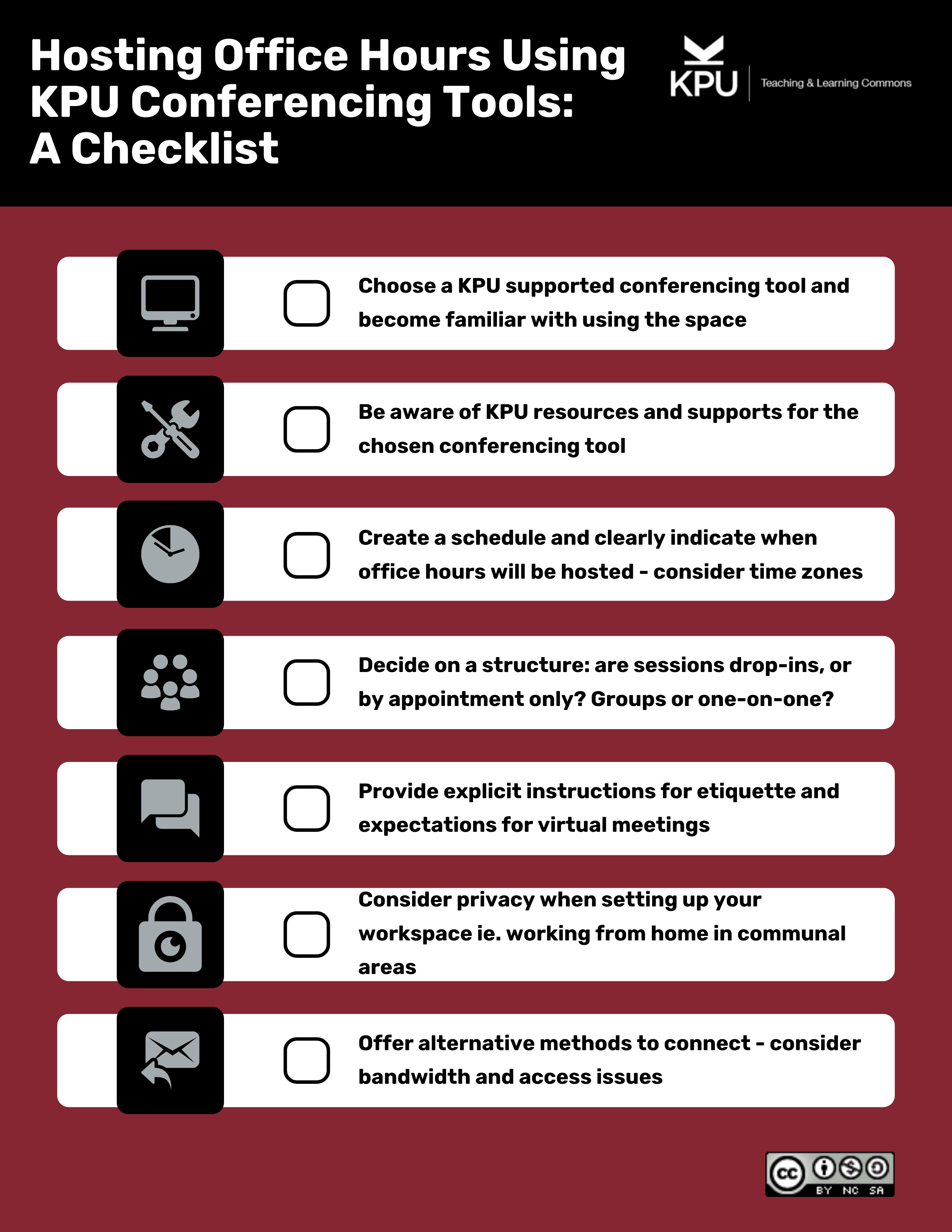4 Hosting virtual office hours
A thoughtful implementation of office hours is an essential component of the learning process and is a recognized best practice. Chickering and Gamson (1989) postulated that “frequent student-faculty contact in and out of classes is the most important factor in student motivation and involvement” (p. 3). KPU supports this practice with conferencing tools to host virtual office hours and engage with students in real-time using: webcams, microphones, chat features, and dial-in phone access. Understanding how students access the meeting space, and the devices used, creates an opportunity for students to relate to their instructor on an individual level, which is known to support progress and development.
A balanced schedule of virtual office hours based on course dates and times, like assignment due dates, can provide students with timely support during the course’s critical points. It has been common to select office hours based on the class schedule, but this approach can limit support. Providing appointments outside of the scheduled hours and offering alternatives, such as email communication, encourages connection with students who may not be comfortable or capable of meeting by video, online.
Asynchronous channels can also act as filters for virtual office hours, as some student enquiries can be addressed in email format. Creating a reference source of text, video or other media that encapsulates common questions or issues experienced teaching the class proactively shows empathy for student need.
Another consideration is that just as traditional classroom instruction has been affected by video conferencing, so to should office hours. Perhaps designating certain dates for Q&A on specific content, or perhaps offering a Jeopardy-type game to be played with important course content can engage and educate learners while more effectively utilizing the technology.
Links:

References:
Chickering, A. W., & Gamson, Z. F. (1989). Seven principles for good practice in undergraduate education. Biochemical Education, 17(3), 3.

